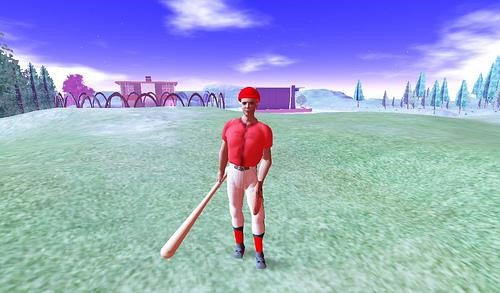Plan for Success: Base Digital Lesson Plans on the Principles of Video Game Design
According to some statistics around 20% of the world’s population play video games. What are the characteristics of video games, such as Angry Birds, Minecraft, Candy Crush or World of Warcraft that make them so addictive? Can their design principles be applied to education? Can we, as teachers, create digital lessons that students will “play” (or do) again and again practicing and improving with each attempt?

Is it possible to apply principles of video game design to teaching?
Built in metacognition
One of the top features of video games is that they are metacognitive. Gamers often have to choose an avatar that they guide through the challenges. In fact, what they are doing is thinking about their own thought processes. Gamers recognise their own strengths and weaknesses and then adapt and repeat their attempt accordingly. There is evidence that improved metacognition is associated with students’ overall academic success.
In a meta-analysis of 91 studies, Wang, Haertel, and Walberg (1993) determined that metacognition is the number one shared characteristic of high academic achievers.

Video games are metacognitive
Promoting student metacognition will afford students the opportunity to plan, monitor and evaluate their own learning processes.
Here are some instructional strategies that promote metacognitive thinking (Ellis, Denton & Bond, 2014):
- Planning strategies: modelling, goal attainment, checklists, diagrams, mnemonics, graphic organizers, and guided practice
- Monitoring strategies: modelling, diagramming, answer checking, and practicing
- Strategies for evaluating thinking: modelling, independent practice, self-testing, and answer checking
The importance of metacognition in the process of learning cannot be underestimated thus any digital strategy you are planning should include some implicit instruction of metacognitive skills.
Fail and Try Again
In many videogames the best way to learn is to try, fail, assess and try again.

Video games create a positive relationship with failure
Video games create a positive relationship with failure because there is really nothing at stake for the gamer. Digital learning tools should similarly offer students the opportunity to explore, be curious and persist through negative outcomes.
Strategies to let students learn from failure:
- Use the Mulligan Rule: A mulligan in golf is a do over. After submitting, students get a second deadline to redo and resubmit their work. Think about it, how many times do you rewrite a professional email before sending it?
- Don’t define success as perfection when discussing a project. Many celebrated “successful” people failed at school because they were unusual thinkers. Consider students’ risk-taking, curiosity and ability to think outside the box when assessing their production.
- Let students see you fail: Don’t be embarrassed and hide your failures. Show the students how you recover from failure. Model the steps you take.
These and many other strategies can be found in Teaching Strategies: Let Students Learn From Failure.
Self-Assess to Progress
Without someone nearby to explain how the video game is played, gamers take charge, find out what they need to know to improve. Students also need to make thoughtful decisions about what works and what doesn’t and teachers have to give them the opportunities to evaluate their own progress.
We tend to think of feedback as something a teacher provides, but if students are to become independent lifelong learners, they have to become better at judging their own work.
If your college has a learning management system, such as Moodle, you can use the quiz module to create your own self-assessment instruments. When providing feedback for individual questions it isn’t necessary give the answers. You can direct students to the information they need to get the answers right.
When the students receive feedback ask them to reflect on the results and create a plan to improve. For example, students can write their reflections in an ePortfolio, or blog and chronicle their progress over the session.
Peer assessment can develop students’ ability to judge their own work. Formative peer evaluation not only exposes students to different ways of dealing with tasks, but also provides them with opportunities to develop evaluative skills, which can be used to monitor their own work.

Students need practice giving feedback to peers
Engage Students
Leveraging gaming mechanics in your digital lessons will present a challenge that students will be willing to devote time towards. The following ideas come from 4 Ways to Engage Digital Learners:
- Tap into passions: Students in the digital era are passionate about issues that affect them. Listen for the topics that move the student population and see if they connect to content, ideas, or issues that are consistent with your class objectives. Having students develop a public service announcement, for instance, gives them a chance to practice and apply persuasive writing skills in a real-world, authentic context.
- Connect to their world: It may seem difficult to find time for real-world projects, but when teachers only focus on delivering course content, students end up doing tasks that don’t resemble what people do in the real world outside of the classroom.

Classroom tasks should resemble what people do in the real world
- Make students the experts: Ask them to create learning resources like videos, animations and tutorials for difficult topics. The process of deconstructing and then reorganising the information will help students understand the concepts and provide you, if necessary, with an opportunity to identify misconceptions.
- Give their voice a platform: Digital storytelling is a means to delve deeper into the content. For example, have students create docudramas showing historic events or scientific processes from the perspective of a specific person.
While digital lessons or activities offer many benefits for teachers and learners, they are not a solution for all learning contexts, tasks or content. Just like any other pedagogical strategies their use should be deliberate, purposeful and engage students in meaningful learning.
Have you designed any digital lesson plans or activities? Any tips to share?

